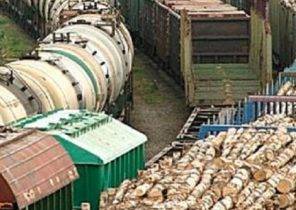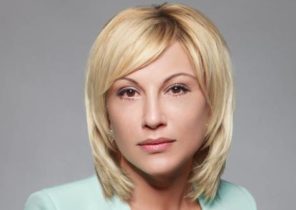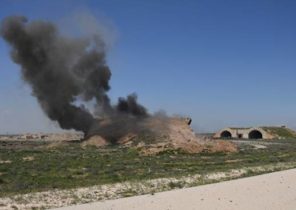Russia accuses Finland of genocide. It is alleged that during the Second world war, Finland was a Russian buried alive and poisoned them with gas. According to Finnish historians, this has no basis in fact. Russian historian Anatoly Razumov is only one piece of advice: do not respond to classical counter-propaganda. A Russian Investigative Committee suddenly deleted all accusations of Finland from its website.
“Remake history, to turn the tide in their favor, to appeal to the lowest instincts of man is one of the worst legacies of the Soviet propaganda. And now it continues. My advice — don’t react”, — said Russian historian Anatoly Razumov over the phone HBL.
Russia accuses Finland of genocide. At the end of April, the Russian Investigative Committee announced the start of legal proceedings against Finland. We are talking about the period from 1941 to 1944, when Finland occupied parts of Russian Karelia, including Petrozavodsk, and created there camps where the interned Russian civilians.
May 18 all materials against Finland suddenly disappeared from the website of the Investigative Committee.
“They threw the informational bait. Better for her not to bite. But it is very good that Finnish historians have published papers that refute these allegations,” — said Anatoly Razumov, the expert on Stalin’s purges and works in the Russian national library in St. Petersburg.
“The same process again”
According to the National archives, Finland interned in the camps a total of 30 thousand civilians. Died 4 060 people. 1 345 were children under 15 years of age.
Now Russia claims that the number of deaths was at least twice and that many prisoners were buried alive or killed in gas chambers.
From these data there is no historical reason, according to Finnish historians, specializing in the Finnish occupation policy in the Russian Karelia. One of them, Laine Antti (Antti Laine), associate Professor of history and author of the book “the Two faces of greater Finland: the situation of civilians in East Karelia during the Finnish occupation from 1941 to 1944” (Suur-Suomen kahdet kasvot — Itä-Karjalan siviiliväestön asema suomalaisessa miehityshallinnnossa 1941-1944).
“I’ve studied these issues for forty years. Every ten years, Russia starts the same process. It is nothing new never leads, everything is already known. I always respond to journalists ‘ questions, but it’s certainly annoying,” said Antti Laine HBL.
However, accusations of genocide, according to Antti Laine, is something new.
“We never heard,” he said dryly.
Genocide was not in the plans
Finnish policy in the occupied territories really was not particularly humane. The population was divided into ethnic Finns and Slavs. From the first were treated well and never moved. The Slavic population was interned, because he considered him a security risk. The plan was to make the Petrozavodsk part of Finland and then force to take out the Russian population abroad.
But according to Antti Laine, Finland did not have the goal to destroy the Russian.
“That is true, the mortality rate in the camps was high, which is primarily due to the lack of food. Allegations of gas chambers is not true. But prisoners were forced to walk to the bath, to get rid of lice and prevent the spread of typhus”.
Finnish occupation policy in Russian Karelia have already been investigated. Finland has concluded with the Soviet Union the world in Paris in 1947. In the framework of a peace Treaty in Finland, 14 people were convicted of war crimes in the occupied territories. After that the Soviet Union was no longer any demands to Finland, but Finland itself was founded Commission, which investigated more than 3 million cases of war crimes in prisoner of war camps. Based on this, 910 filed lawsuits, but half of them were made in acquittals due to lack of evidence.
Finland gave Russian researchers free access to a Finnish national and military archives. Russia, for its part, refuses to open the archives of the NKVD and the KGB to Finnish scientists.
The question is, what is actually needed. Why the Russian authorities suddenly decided to push against Finland charges, which are very easy to refute?
Russian historian Anatoly Razumov says: just forget the story.
“I decided long ago not to be when our security throw this kind of bait. They work according to the instructions of the Soviet counter-propaganda: you have to throw something that is not true, so people jumped at this statement and began to argue. And it is often possible to concoct some hybrid history of the Second world war”.
Razumov Russian uses the verb “to twist”. In addition to the main values, it can still be used in the sense of “to manipulate”.
“The goal is always the same. We need to prove that the country which attacked the Soviet Union, to blame themselves. In Katyn, where the Soviet NKVD in the course of a series of massacres killed more than 22 thousand Polish officers, and in other places recently remade former memorials. The bloody executions did not deny, but saying that poles were killing Russian soldiers. Suddenly it turned out that in Sandarmokh buried not only the victims of Stalin. It was found that also the Finns had known about these graves and were buried in the same place of red Army soldiers. The message is the same — poles, rubbish, Finns are scum, and everyone we attacked, blame yourself. And all this in order to divert attention from their own genocide, that Stalin staged his own citizens.”
Unearthed mass grave
Anatoly Razumov has worked for several years with historian Yuri Dmitriev in Petrozavodsk. Dmitriev, who discovered the place of Stalin’s mass graves in Russian Karelia, already more than a year in prison on charges of pedophilia. Once it has cleared, but then the Prosecutor took up the case again. It is obvious that the case was fabricated in order to make Dmitrieva silence.
As part of the process of the Russian military-historical society two years in a row dug out the largest mass grave in Sandarmokh. Dmitriev found her in 1997, caused the data on the map and well researched. Here are buried more than 9 thousand victims of Stalin’s purges in the 1930-ies.
Graves dug up to find evidence that in fact there are Russian soldiers who were executed by the Finnish army. The blame should be reallocated. But the evidence has stalled.
In September 2018 the HBL participated in a press conference on the excavations at Sandarmokh between Russian news Agency in Moscow. The Russian military historical society have invited four experts, including two professors. Lasted more than an hour report about fascist Finland and its brutal occupation policy. But no evidence that Sandarmoh buried Russian soldiers, present and couldn’t.
Two years later, the evidence is still there.
The occupation policy of Finland in Karelia
From 1939 to 1940 and from 1941 to 1944 Finland and the Soviet Union fought twice.
During the first Russo-Finnish war, the Soviet Union attacked Finland. Vyborg, second largest city of Finland, was ceded to the Soviet Union.
During the second Soviet-Finnish war, Finland attacked the USSR together with the Germans, in order to regain Vyborg. The Finns crossed the old border and occupied, among other things, the Russian city of Petrozavodsk, where the Russian part of the civilian population, in total about 30 thousand people interned in the camp. 060 4 of them died.
Yuri Dmitriev
64-year-old Yuriy Dmitriev is a historian from Petrozavodsk and head of the Karelian branch of Memorial, the Russian human rights organization, which was founded in the Soviet era to keep the memory of the victims of political persecution in the Soviet Union.
In the early 1990-ies Dmitriev began to study the archives of the NKVD and the KGB. He found information about the mass executions of the 1930-ies and published the names and details of victims. In 1997, he found one of the largest graves of the former Soviet Union in Sandarmokh: there are buried 9 thousand people.
Dmitriev is in jail on charges of pedophilia. Once his charge has been removed.







